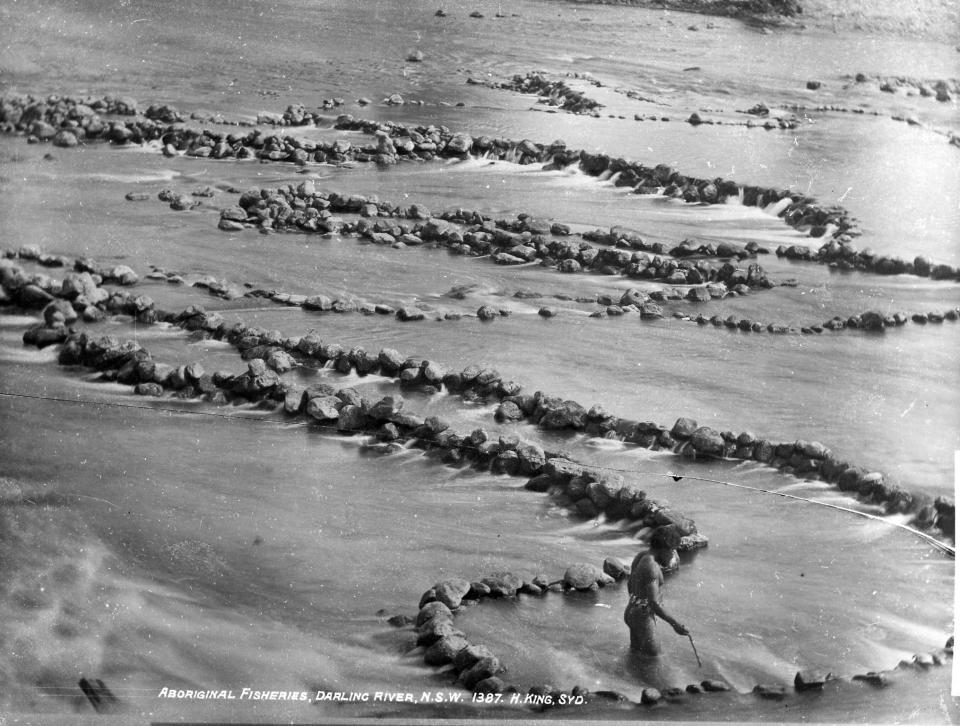Unexpected story behind this photo of an Aussie waterway
An interesting and very symmetrical structure in a northern NSW river is being touted as one of the oldest man-made structures in the world.
The Brewarrina Aboriginal Fish Traps, traditionally known as Baiame’s Ngunnhu, is a heritage-listed site located in the Barwon River near the Queensland border.
They are estimated to be 40,000 years old.

“The traps are a complex network of river stones arranged to form ponds and channels that catch fish as they travel downstream,” according to the Murdi Paaki Regional Assembly.
A long-time meeting place for the Indigenous community, the half-a-kilometre-long traps have also become a popular tourist destination.
How were the fish traps created?
The structure is an ancient Dreamtime site built by Baiame and his two sons, Booma-ooma-nowi and Ghinda-inda-mui, according to Aboriginal history.
Baiame created the Barwon River out of what used to be a waterhole, Brewarrina local Brad Steadman told Yahoo News Australia.
He saw a black rim fish in the waterhole and in his attempt to spear the fish, created the bends of the river.
The water followed him, Mr Steadman said.

Later, the local Ngemba people called Baiame back after being faced with famine during a lengthy drought.
He came up with the design of weirs and holding ponds after casting his net across the river and showed the locals and his sons how to build the traps from Schist rocks and boulders.
Baiame then taught the Ngemba community how to perform a rain dance, which eventually helped fill the river with water and the pods with fish, Mr Steadman said.
Tourists warned after new video exposes cruel elephant training methods
'Historic day': Australia and NZ win bid to host Women's World Cup
“The fish traps reflect an ancient genius in the simplicity of their design, which was adaptable to the seasons and changing water levels,” according to the Murdi Paaki Regional Assembly.
“The fish traps work by using stone walls to guide fish that are swimming upstream into the holding ponds where the Aboriginal people traditionally caught them with their bare hands, used their spears or blocked them in ponds to be caught later.”

“The fish traps were an important site of food production, work, trade and consumption.”
In the 1920s, people from Brewarrina removed some of the stones to build homes.
Today, Indigenous people in the region continue to use, maintain and care for the traps.
Do you have a story tip? Email: newsroomau@yahoonews.com.
You can also follow us on Facebook, Instagram and Twitter and download the Yahoo News app from the App Store or Google Play.




